
Crucifixion (Corpus Hypercubus) Salvador Dalí 1954 Flickr
His 1954 painting Crucifixion (Corpus Hypercubus) bears the most obvious evidence of mathematical influence. The painting depicts Jesus levitating in front of a cross, albeit one that appears to.
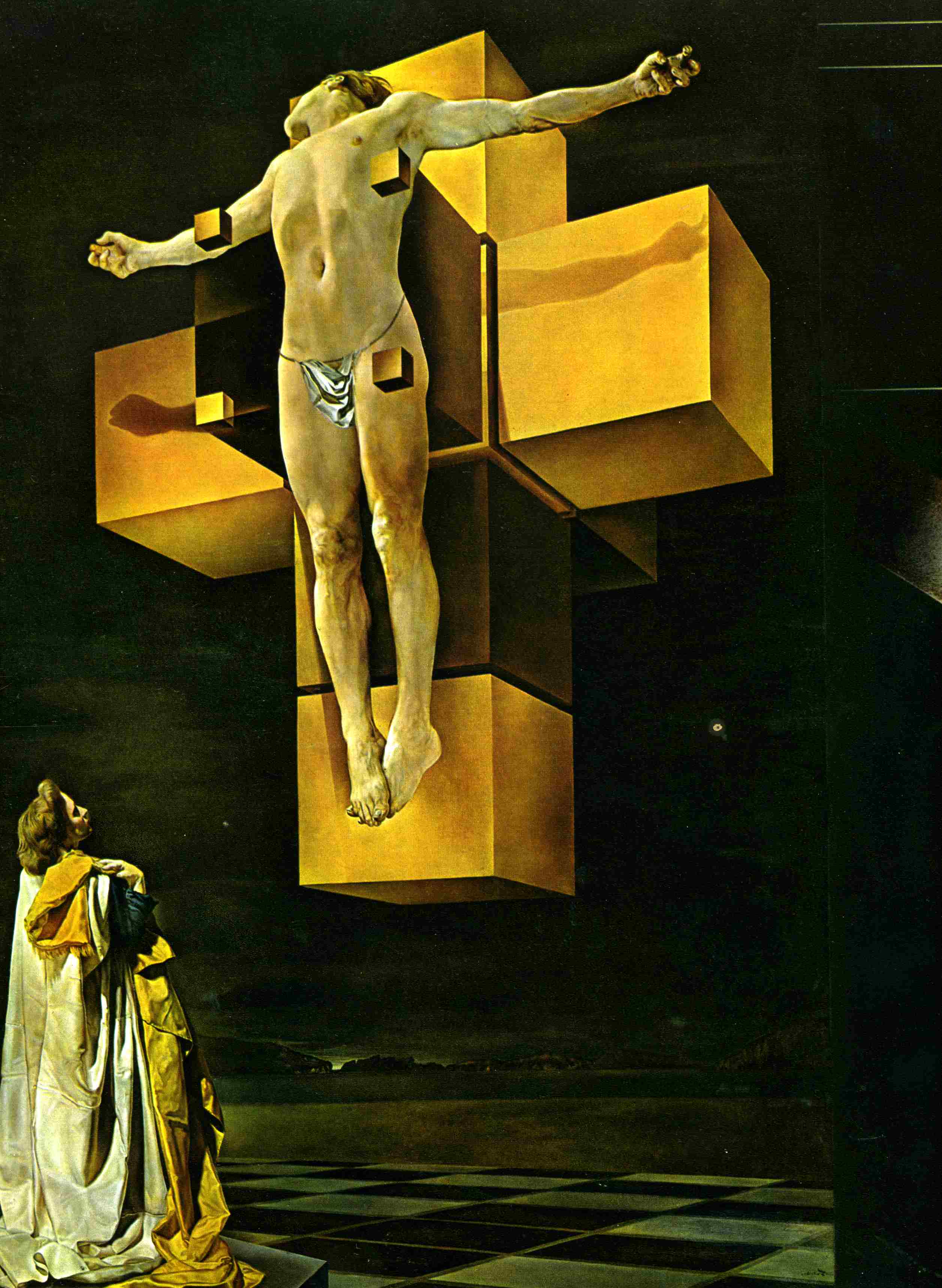
GET IMAGE NAME
Crucifixion (Corpus Hypercubus - 1954). Source — Public Domain We all know Salvador Dali as a famous surrealist painter. But do you know that after the 1945 nuclear war, Dali became obsessed with.

Salvador Dali. Spanish, 19041989. Crucifixion (Corpus Hypercubus Stock
Crucifixion (Corpus Hypercubus) is a 1954 oil-on-canvas painting by Salvador Dalí which depicts the Crucifixion of Jesus, though it deviates from traditional portrayals of the Crucifixion by depicting Christ on the polyhedron net of a hypercube and adding elements of Surrealism.

Our fascination with the religious art of Salvador Dali began when we
Crucifixion (Corpus Hypercubus) is a 1954 oil-on-canvas painting by Salvador Dalí. A nontraditional, surrealist portrayal of the Crucifixion, it depicts Christ on a polyhedron net of a tesseract (hypercube). It is one of his best-known paintings from the later period of his career. Background
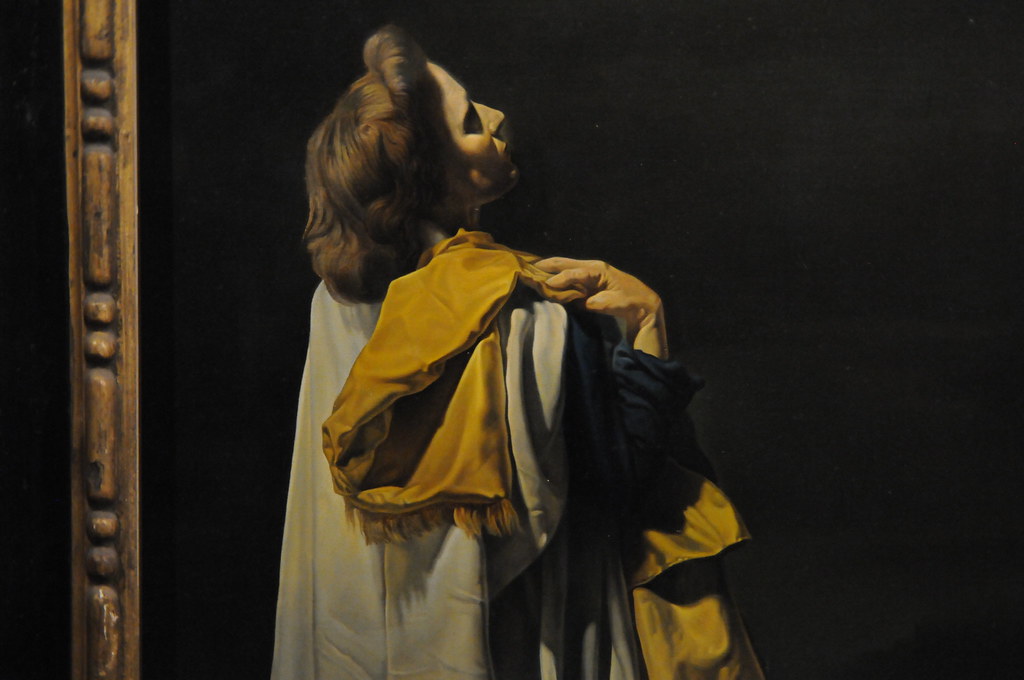
Crucifixion (Corpus Hypercubus) Salvador Dalí 1954 Flickr
Crucifixion (Corpus Hypercubus) by Salvador Dalí. (1954) Metropolitan Museum of Art, New York, USA. The image shown here is claimed to be used under fair use as: It is a historically significant painting, as per the information in the article. The image is only being used for informational purposes.

Offset Lithograph After Salvador Dali "Crucifixion (Corpus Hypercubus
76 1/2 x 48 3/4in. (194.3 x 123.8cm)Dalí fused his interests in Catholicism, mathematics, and science to create this new interpretation of an oft-depicted su.
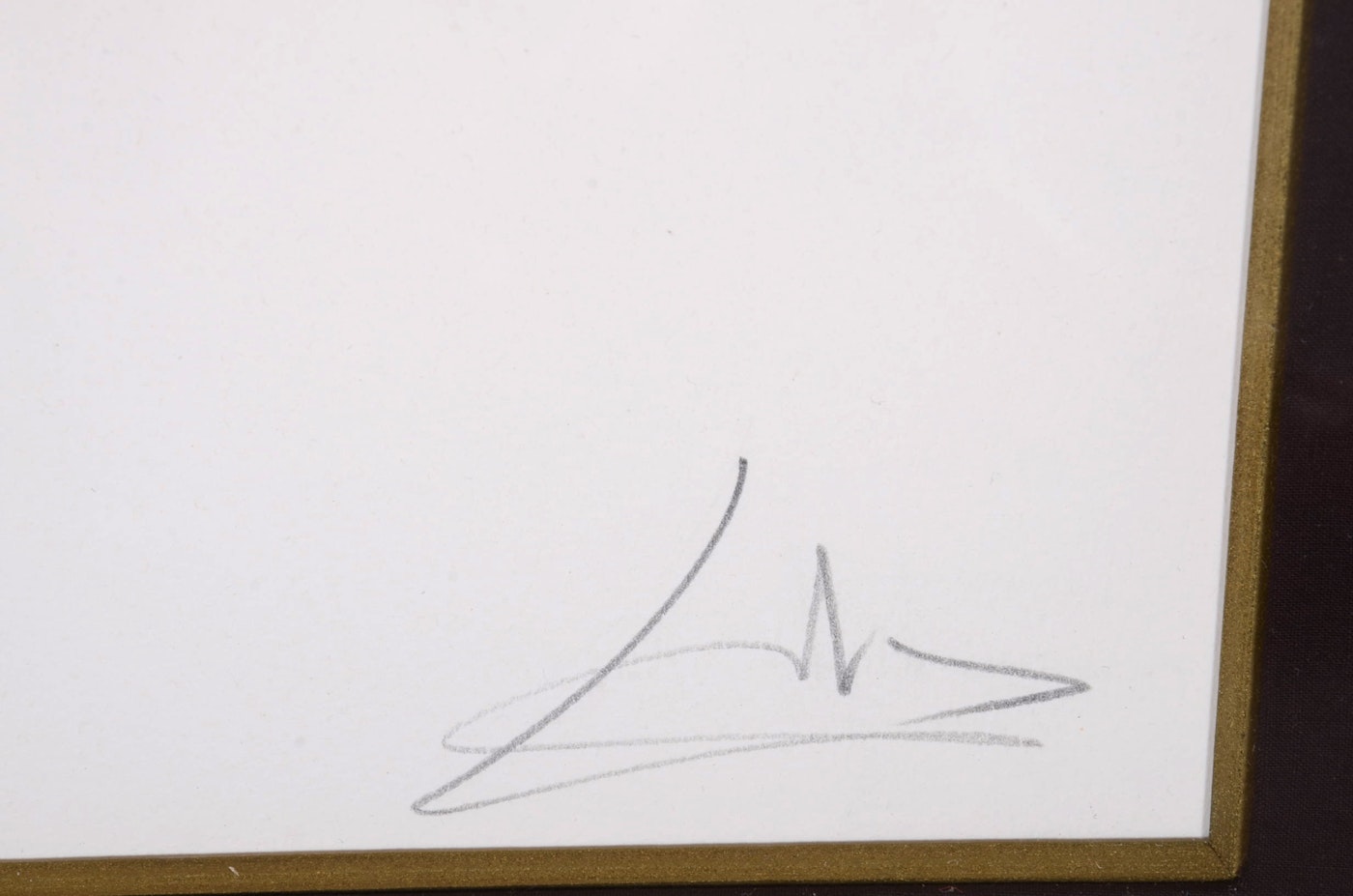
Original Salvador Dali Crucifixion (Corpus Hypercubus) EBTH
Crucifixion (Corpus Hypercubus) Salvador Dalí Spanish 1954 On view at The Met Fifth Avenue in Gallery 624 Dalí utilized his theory of "nuclear mysticism," a fusion of Catholicism, mathematics, and science, to create this unusual interpretation of Christ's crucifixion.

Salvador Dali Print Crucifixion Corpus Hypercubus On Wood Pyraglass
In Crucifixion (Corpus Hypercubus), Christ is suspended in front of an unfolded hypercube over a checkered floor. Dalí's wife and muse, Gala, stares up at Christ with an expression that could be awe, devotion, or religious fervor. Salvador Dalí (Spanish, 1904-1989). Crucifixion (Corpus Hypercubus), 1954.

Crucifixion Corpus Hypercubus Painting by Salvador Dalí Printed on
Crucifixion (Corpus Hypercubus) is a 1954 oil-on-canvas painting by Salvador Dalí. A nontraditional, surrealist portrayal of the Crucifixion, it depicts Christ on a polyhedron net of a tesseract (hypercube). It is one of his best-known paintings from the later period of his career.

Original Salvador Dali Crucifixion (Corpus Hypercubus) EBTH
Salvador Dali called himself the first painter of the atomic age. In Crucifixion (Corpus Hypercubus), Dali explores his obsession with nuclear science, mysti.

Crucifixion (Corpus Hypercubus) Salvador Dalí Yvonne Yeh Flickr
In 1954 Spanish surrealist painter Salvador Dali (Salvador Domingo Felipe Jacinto Dalí i Domènech, 1st Marquis of Dalí de Púbol) completed Crucifixion (Corpus Hypercubus), a nontraditional surrealist painting of the Crucifixion of Jesus, depicting Christ on the "polyhedron net of a tesseract (hypercube)."
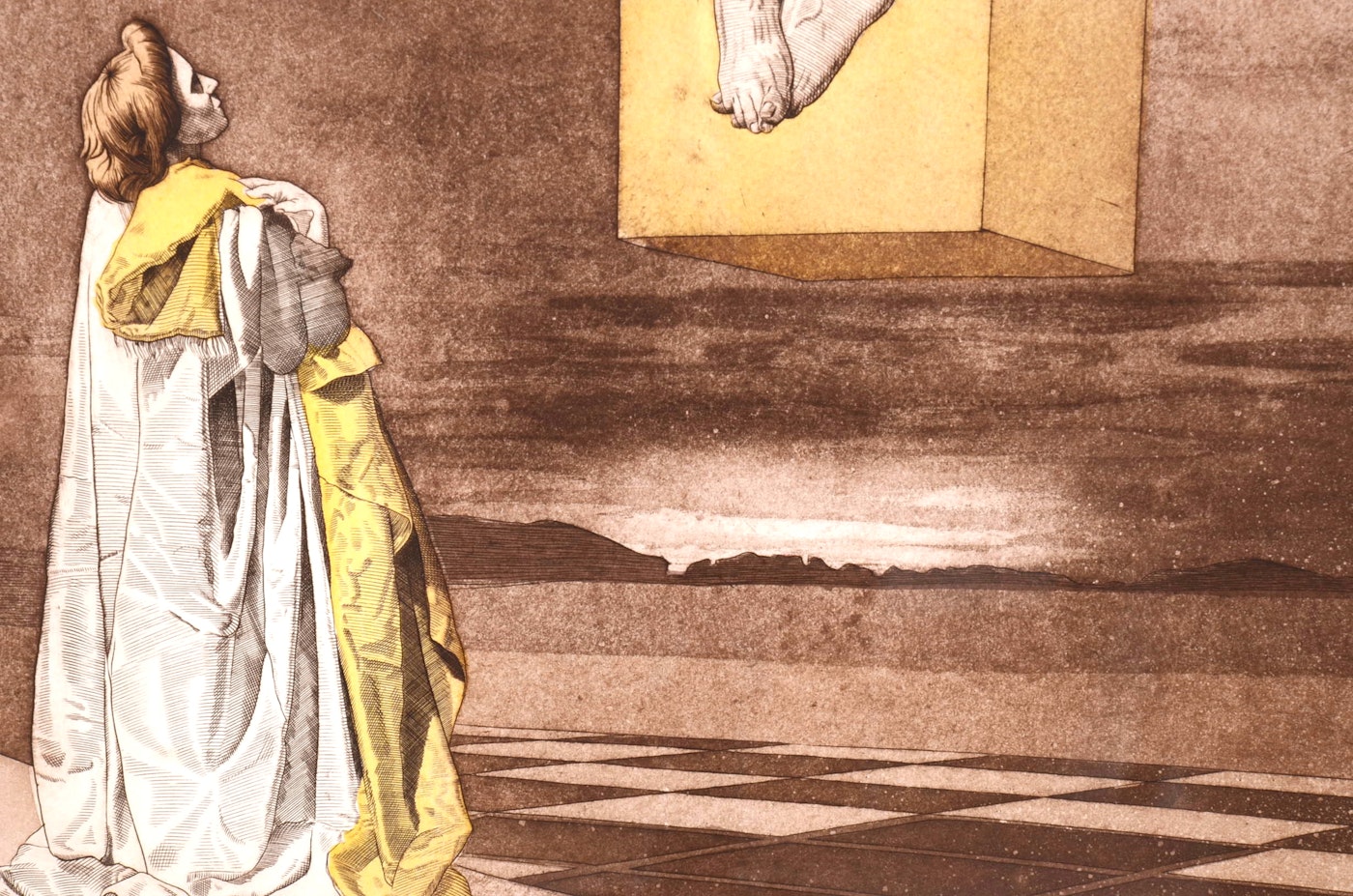
Original Salvador Dali Crucifixion (Corpus Hypercubus) EBTH
Crucifixion (Corpus Hypercubus) is a 1954 oil-on-canvas painting by Salvador Dalí. A nontraditional, surrealist portrayal of the Crucifixion, it depicts Christ on a polyhedron net of a tesseract (hypercube). It is one of his best-known paintings from the later period of his career.
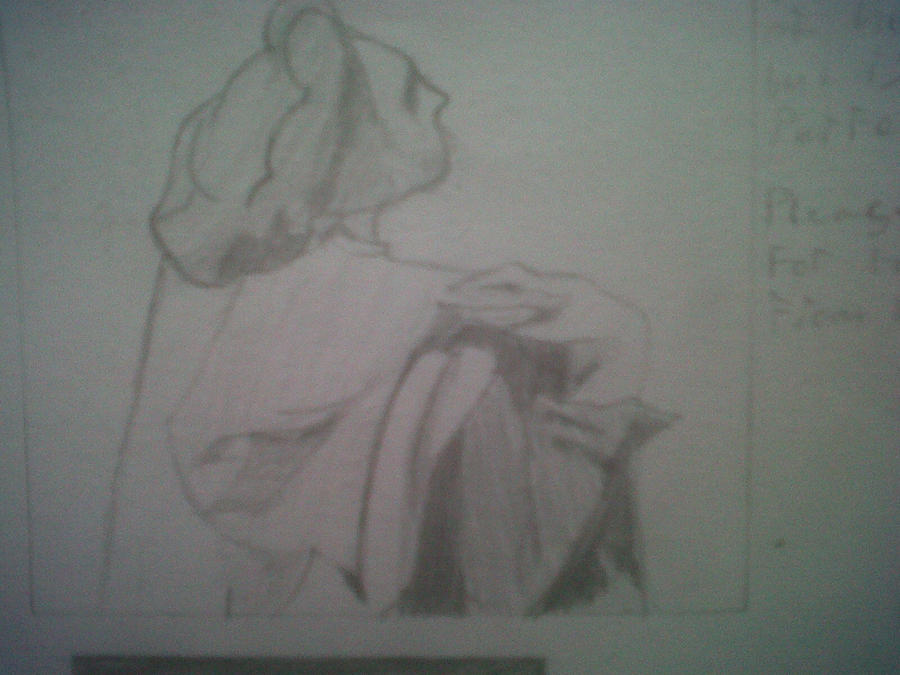
Crucifixion Corpus Hypercubus by legion66689 on DeviantArt
Crucifixion (Corpus Hypercubus) unites a classical portrayal of Christ with a shape that only exists in mathematical theory. Dalí's floating cross is what Banchoff describes as "an unfolded.
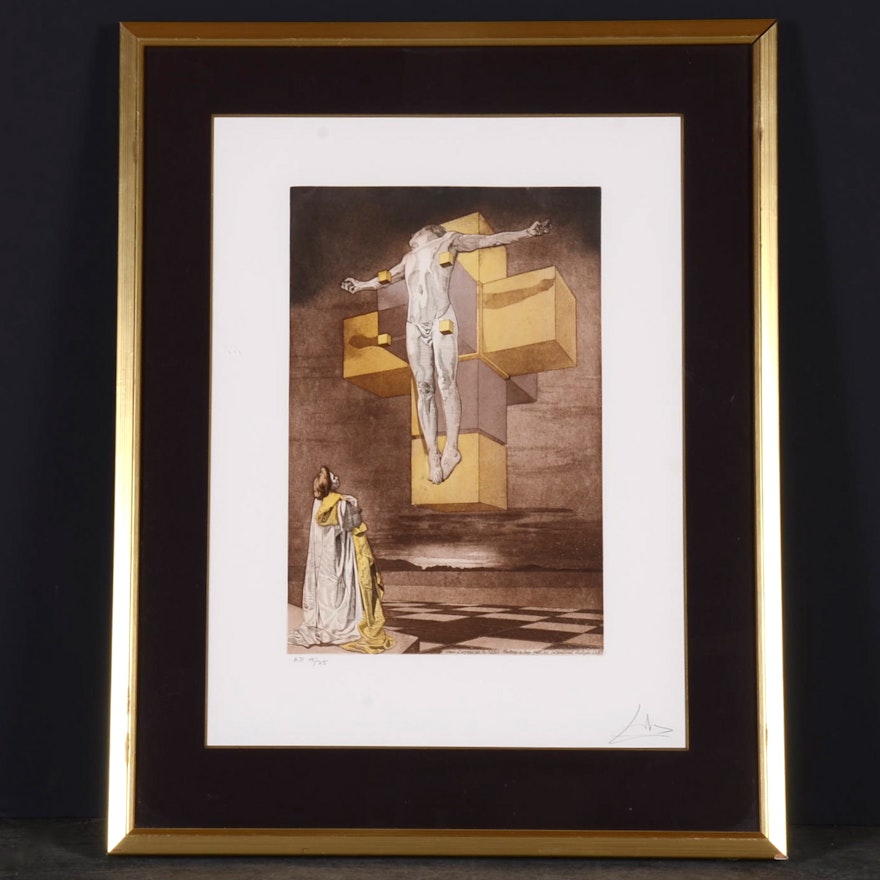
Original Salvador Dali Crucifixion (Corpus Hypercubus) EBTH
Salvador Dalí's "Crucifixion (Corpus Hypercubus)" is a historic oil-on-canvas painting completed in 1954. The artwork depicts Christ on a polyhedron net of a tesseract, also known as a hypercube. It is considered one of Dalí's best-known paintings from the later period of his career and is located at The Metropolitan Museum of Art in New York.

Salvador Dali Crucifixion Corpus Hypercubus Signed Aug 29, 2019
Perhaps the most influential artist of the 20th century, Pablo Picasso may be best known for pioneering Cubism and fracturing the two-dimensional picture plane in order to convey three-dimensional space. Inspired by African and Iberian art, he also contributed to the rise of Surrealism and Expressionism. Picasso's sizable oeuvre grew to.

Salvador Dali "Crucifixion Corpus Hypercubus" Gold Edition Relief
The study for Crucifixion (Corpus Hypercubus) shows how he explored a depiction of the cross as a tesseract, a hypercube with eight cubical cells, which is thought to have been inspired by the.